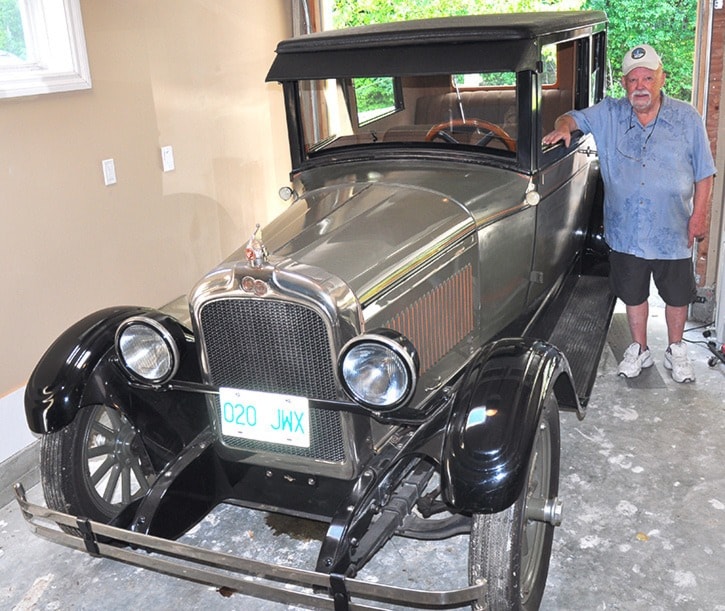As we idle in our econoboxes, surrounded by crash barriers, air bags, air conditioning and power steering, it’s hard to see what we take for granted when it comes to driving.
To get an idea of just how spoiled we are with standard automotive options today, we took a look at Sooke resident Stan Eakin’s 1929 Pontiac Big Six coupe, a car he’d bought in boxed pieces for $6,000 nearly 20 years ago.
“A friend of mine asked me, do you want to restore an old car? I said, heck, everybody wants to restore an old car!’” Eakin laughed.
Eakin made the Pontiac his personal project: redoing the frame and rebuilding the car from the ground up to the same specs it had when it rolled off the assembly line from General Motors’ plant in Oakland, Calif. more than 80 years ago.
He recalls the day when he got the car back home.
“I brought it home and said to my neighbour, ‘I’ll get it and work on it, but you have to come up and help me if I run into any trouble’,” Eakin said.
Unlike other restorations, where modern components are added such as interior comforts and more powerful and reliable powertrains, Eakin kept his 1929 pretty much stock, right up to the wooden roof that he rebuilt himself.
The same continues under the car’s folding hood, which contains Pontiac’s “Big Six” 6-29 Series, a 3.3-litre (200 cubic-inch) flathead straight-six cylinder engine capable of a modest 60 horsepower.
Putting the power down is also from the era, a three-speed manual transmission with reverse gear. Keep in mind this is pre-synchromesh gears, unlike in modern manual gearboxes, meaning you’d have to be telepathic to know when to shift without grinding each gear into metal filings.
Still, the Pontiac Big Six was far from crude.
It came standard with a starter motor at a time when prospective car owners had their wrists broken by manual handcranking their engines. It was also smart and simple, bearing an odometer, horn, light switch (from very dull to very bright) and a clever “air conditioning” system that funneled cold air from under the car and into the cabin.
And the signal lights?
“There are none, you just had this,” Eakin laughed, stretching out his arm as if signaling a left. Yup, you’d signal like a cyclist, as signal lights were neither mandatory or available in those days. Or seatbelts, for that matter.
Despite its flaws though, Eakin is pleased with the car.
“It chugs along, I’m pretty happy with it,” he said.
The Pontiac is not Eakin’s only toy. He plans to sell it and make way for his next project, a DeSoto sedan of the same era.
